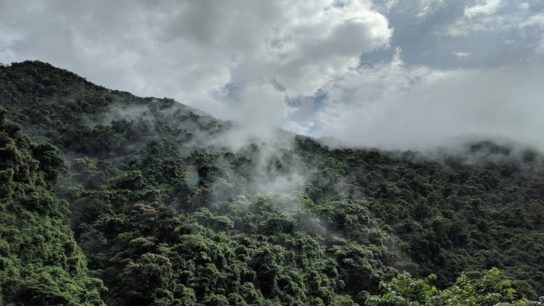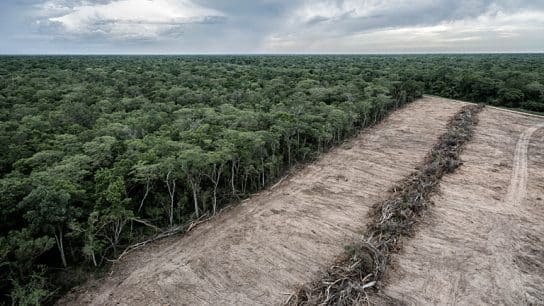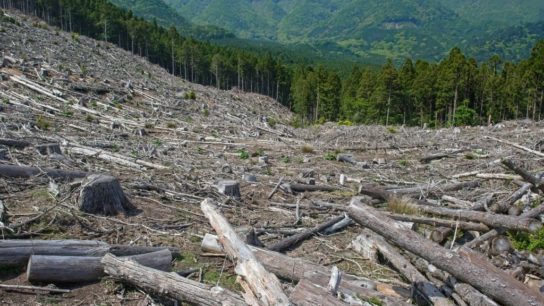In the heart of Kenya’s Meru National Park, a landscape of raw beauty and untamed wilderness sets the stage for a remarkable conservation story. From the iconic Elsa the lioness to the dedicated work of modern-day stewards like Grace Leonard Waidaka, Meru’s revival stands as a testament to resilience in the face of challenges, now facing a new adversary: the relentless impacts of climate change.
—
By Andi Cross
At first glance, Kenya’s Meru National Park feels almost untouched. Its landscapes roll gracefully between golden savannah, dense riverine forests, and rugged bushland, all framed by distant mountains. It is wild in every sense — raw, unpredictable, and brimming with life. Elephants weave between trees like lumbering shadows. Reticulated giraffes stretch above the thorns. Lions rest lazily in the heat. And somewhere in the brush, leopards linger, rarely seen but always present. But beneath the beauty, Meru is a park that has been forced to fight for its future.
This stretch of northeastern Kenya — spanning 870 square kilometers — is one of the country’s most historically significant protected areas. It is where famed conservationists George and Joy Adamson raised and released Elsa the lioness, immortalized in the beloved film, Born Free. However, it is also a place that once faced devastating declines. Tourism nearly vanished, entire populations were nearly poached to extinction, and the park itself teetered on the brink of ruin.

Today, Meru has made a miraculous comeback. Wildlife numbers are rising again, and with that, the park’s history is being honored, not forgotten. A new generation of conservationists — including Grace Leonard Waidaka, general manager of Elsa’s Kopje — is leading that momentum. Grace is one of the few Kenyan women in her position, running a world-class eco-lodge carved into the very hillside where George Adamson once set up camp. Her work is part of a broader movement to protect this place, equally for what it stands for then and now: climate resilience, community-driven conservation, and the evolving future of wild Kenya.
Meru National Park helped shape what global conservation looks like today. It is one of the original battlegrounds where ideas like animal rehabilitation, rewilding, and human-wildlife coexistence were put into practice — long before their broader adoption elsewhere in the world. In the mid-20th century, this land became the backdrop to a tale that would capture so much attention. After three lion cubs were accidentally orphaned in 1956 by George Adamson, him and his wife Joy stepped in to care for them. One of those cubs, Elsa, would become the first lioness successfully rehabilitated and released into the wild. The achievement would eventually inspire Joy’s bestselling book Born Free and the film adaptation that followed.
The Adamsons helped shift global attitudes toward wildlife, showing that animals were worth protecting. However, after Joy was murdered in 1980 and George was killed by poachers in 1989, everything changed. Their absence created a vacuum. In the years that followed, the spotlight shifted, and Meru slipped into neglect. At one point, there were even discussions about converting parts of the park into farmland. For a place that had once defined the conservation movement, it was a rapid and painful reallocation of energy.
This disaster was mitigated when Elsa’s Kopje opened its doors in 1999. The lodge, carved into the granite outcrops of Mughwango Hill, was backed by conservation heavyweights including Dr. Richard Leakey and Virginia McKenna. The focus was to establish long-term conservation programs to ensure the future of Meru lived on, and its rich past was never forgotten again. Through partnerships with Kenya Wildlife Service and the Born Free Foundation, Meru began to rebuild.

In the 1980s and 1990s, Meru National Park faced a severe poaching crisis that drastically reduced its wildlife populations. Elephants were particularly affected, with numbers plummeting from thousands to just a few hundred during this period. Rhinos were completely eradicated from the area, leading to a significant decline in tourism and discussions about potentially de-proclaiming the park once again.
Concerted conservation efforts, including the establishment of a rhino sanctuary in 2002 and the reintroduction of various species back to these lands, are examples of what has contributed to the park’s gradual recovery.
Today, the park is home to thriving elephants, cheetahs, Grevy’s zebras, reticulated giraffes, and more than 75 lions believed to be descendants of those originally released here. Elsa’s legacy still lives strong. But keeping it that way requires daily commitment. After all the park has been through, there is one looming threat that is still ongoing, testing this very commitment like never before: climate change.
A New Test
The region has experienced increased temperatures and decreased rainfall over the past few decades, leading to prolonged droughts. In 2022, Kenya faced one of its worst in recent history, resulting in the deaths of numerous species due to food and water shortages. In Meru, rainfall has decreased to only a third of the amount that fell in 1990, and temperatures have risen by between 0.5 and 1C. These climatic changes have led to greater heat and water stress across the landscape, affecting both wildlife and vegetation. Much of the country saw rivers run dry, crops fail, and communities in crisis. While Meru was spared the worst — thanks in part to its three active rivers — warning signs can not be ignored.
That said, Meru’s comeback has been hard-won. And now, holding the line has only grown more challenging as climate impacts tighten their grip on the region. At Elsa’s Kopje, the team has been observing this firsthand. Wildlife has become more concentrated around water sources. The vegetation, typically lush after rains, thinning. And in nearby parks like Amboseli, conditions have become so severe that the Elewana Collection team, which operates Elsa’s Kopje, had to mobilize emergency aid for neighboring communities.

Grace and her team at the property work closely with the Born Free Foundation and the Kenya Wildlife Service, tracking animal movement, reporting injuries, and assisting with real-time data that supports species protection and climate resilience efforts. Their head guide, Mohammed, speaks daily with conservation partners to ensure the health and stability of the park’s flora and fauna. It is all part of a bigger picture: keeping Meru wild while adapting to the pressures of a climate that no longer behaves the way it once did.
What’s more, the Elewana Collection is putting sustainability first in all their tourism practices—from solar panels to reduced fuel use, to partnerships that directly benefit local communities and ongoing monitoring of tourism’s footprint on the region.

Climate Education
It is important to note that Meru’s future does not rest on wildlife protection alone to be climate resilient. It depends just as much on the people who call this region home. If families are struggling to access basic needs — like food, clean water, or education — it becomes much harder to expect them to prioritize acting as stewards of the natural world. That is why the conservation model here focuses on both land and people equally.
At Oregate Primary School, a nearby partner supported by the Land & Life Foundation, efforts are focused on helping students stay in school. Scholarships, desks, uniforms, and school supplies are made possible by guest donations and direct support from the property. Education is a cornerstone of resilience, and the team treats it with the same urgency as habitat protection, viewing this funding effort as paramount, not a one-time handout.

That same approach carries into climate education. Every year, Grace and her staff host sessions with the surrounding community to talk about how climate change is affecting their lives. These conversations touch on rainfall, agriculture, grazing, and drought preparedness — topics that used to feel distant, but are now central to everyday life. These dialogues aim to raise awareness and inspire youth involvement in conservation and eco-tourism, helping to inspire the next generation to build a career in the sector.
Meru thrives because people collaborate effectively — rangers, guides, conservationists, and communities united by a shared mission. It is a park that embodies what is achievable through partnership-driven protection. Meru’s legacy is built on the shoulders of pioneers. People like George and Joy Adamson, who showed the world that game animals belong in the wild, not behind bars or as trophies, mounted on a wall. Today, that same spirit lives on through the work of people like Grace and the broader teams who call Meru their own.

While today’s challenges are different, they still have the same undertone. Climate change as a whole cannot be mitigated with a single “fix” similar to what the park had experienced throughout its lifetime. Then there are conservation funding ebbs and flows, while communities face new economic pressures. But Meru is still standing, still wild, still full of life. And that is no accident. This park is a reminder that no legacy lasts without care, and that no wild space survives without people willing to fight for it – not with grand gestures, but with daily, deliberate action.
Grace said it best: “Everything I do is for the next generation.” And maybe that is the real story here. Meru is not frozen in time. It is evolving, adapting, and pushing forward. It is shaped by passionate leaders, dedicated communities, and committed educators who are true stewards to the land. Meru has earned its second chance and now its third. This time around, it depends on us to ensure it counts.
Featured image: Adam Moore.
—
This story is part of an editorial collaboration between Earth.Org and Edges of Earth Expedition, a team dedicated to uncovering powerful stories from the frontlines of the climate crisis. Leading the charge is Andi Cross –an expeditionist, impact strategist, writer, and SSI divemaster –who has spent over two years traveling the world, immersing herself in the realities of environmental change.
💡How can I contribute to a more sustainable planet?
- 🗳️ Vote for climate action: Exercise your democratic rights by supporting candidates and policies that prioritize climate change mitigation and environmental protection. Stay informed with Earth.Org’s election coverage.
- 👣 Reduce your carbon footprint: Make conscious choices to reduce your carbon footprint. Opt for renewable energy sources, conserve energy at home, use public transportation or carpool, and embrace sustainable practices like recycling and composting.
- 💰 Support environmental organizations: Join forces with organizations like Earth.Org and its NGO partners, dedicated to educating the public on environmental issues and solutions, supporting conservation efforts, holding those responsible accountable, and advocating for effective environmental solutions. Your support can amplify their efforts and drive positive change.
- 🌱 Embrace sustainable habits: Make sustainable choices in your everyday life. Reduce single-use plastics, choose eco-friendly products, prioritize a plant-based diet and reduce meat consumption, and opt for sustainable fashion and transportation. Small changes can have a big impact.
- 💬 Be vocal, engage and educate others: Spread awareness about the climate crisis and the importance of environmental stewardship. Engage in conversations, share information, and inspire others to take action. Together, we can create a global movement for a sustainable future.
- 🪧 Stand with climate activists: Show your support for activists on the frontlines of climate action. Attend peaceful protests, rallies, and marches, or join online campaigns to raise awareness and demand policy changes. By amplifying their voices, you contribute to building a stronger movement for climate justice and a sustainable future.
For more actionable steps, visit our ‘What Can I do?‘ page.
This story is funded by readers like you
Our non-profit newsroom provides climate coverage free of charge and advertising. Your one-off or monthly donations play a crucial role in supporting our operations, expanding our reach, and maintaining our editorial independence.
About EO | Mission Statement | Impact & Reach | Write for us














